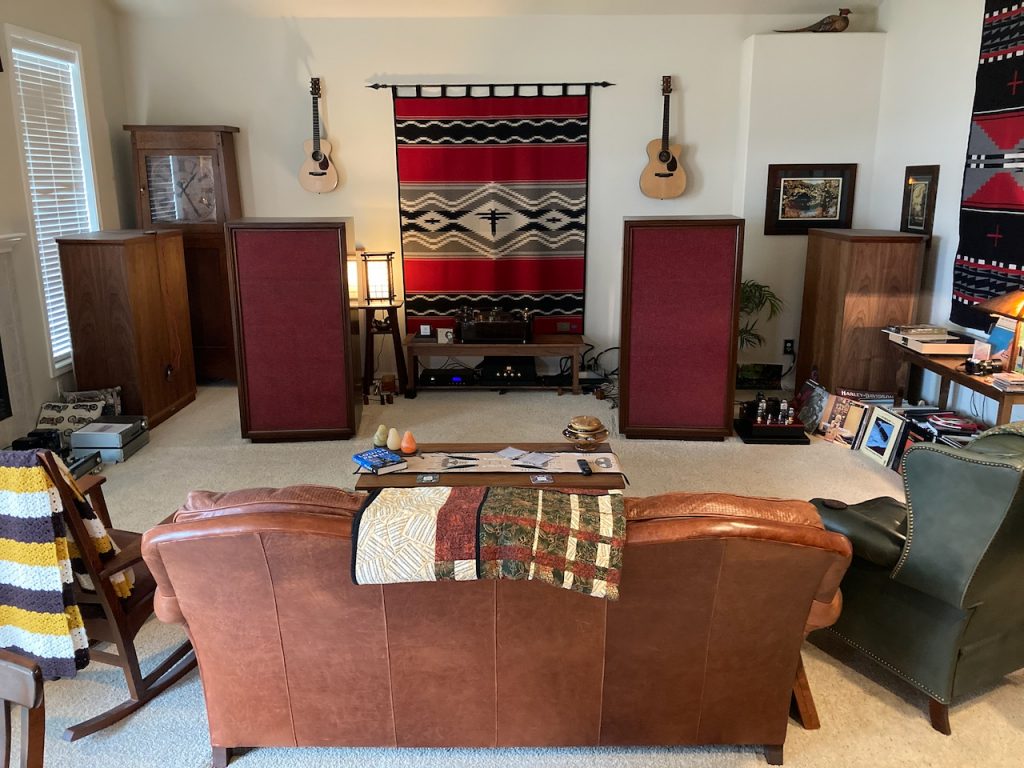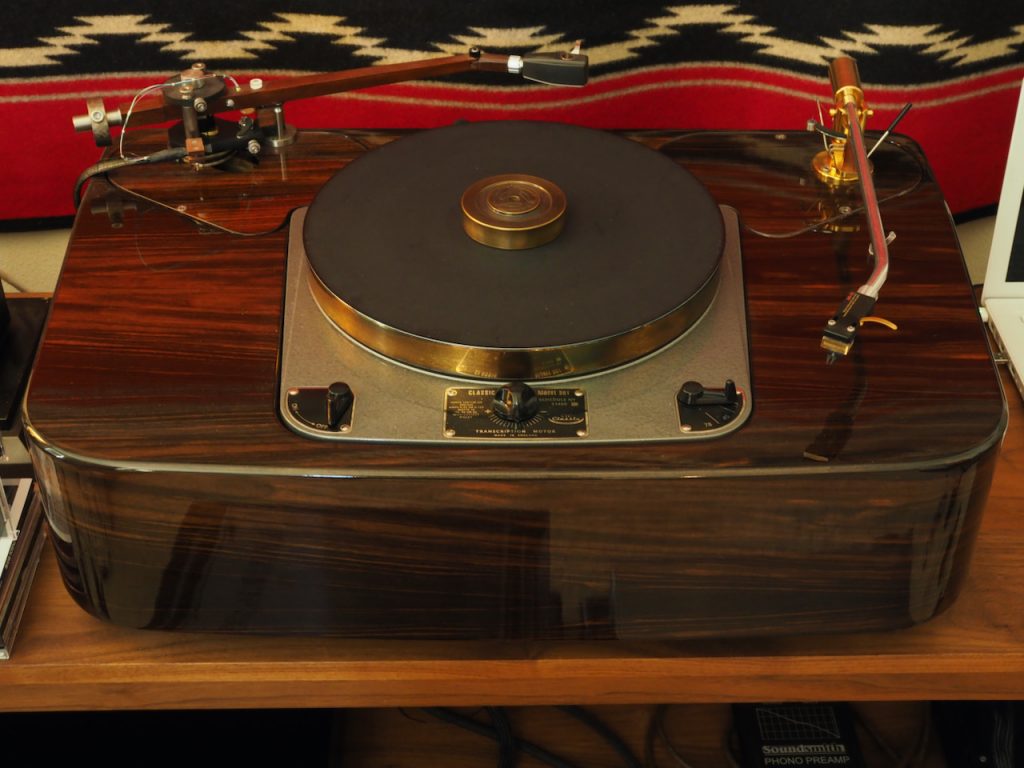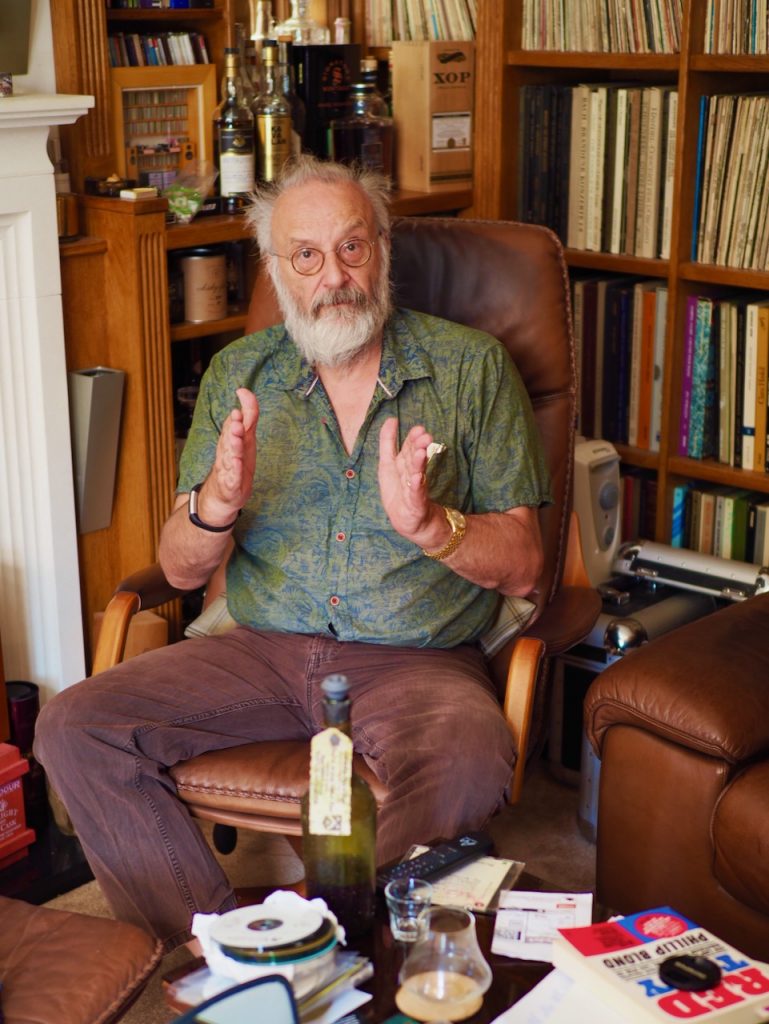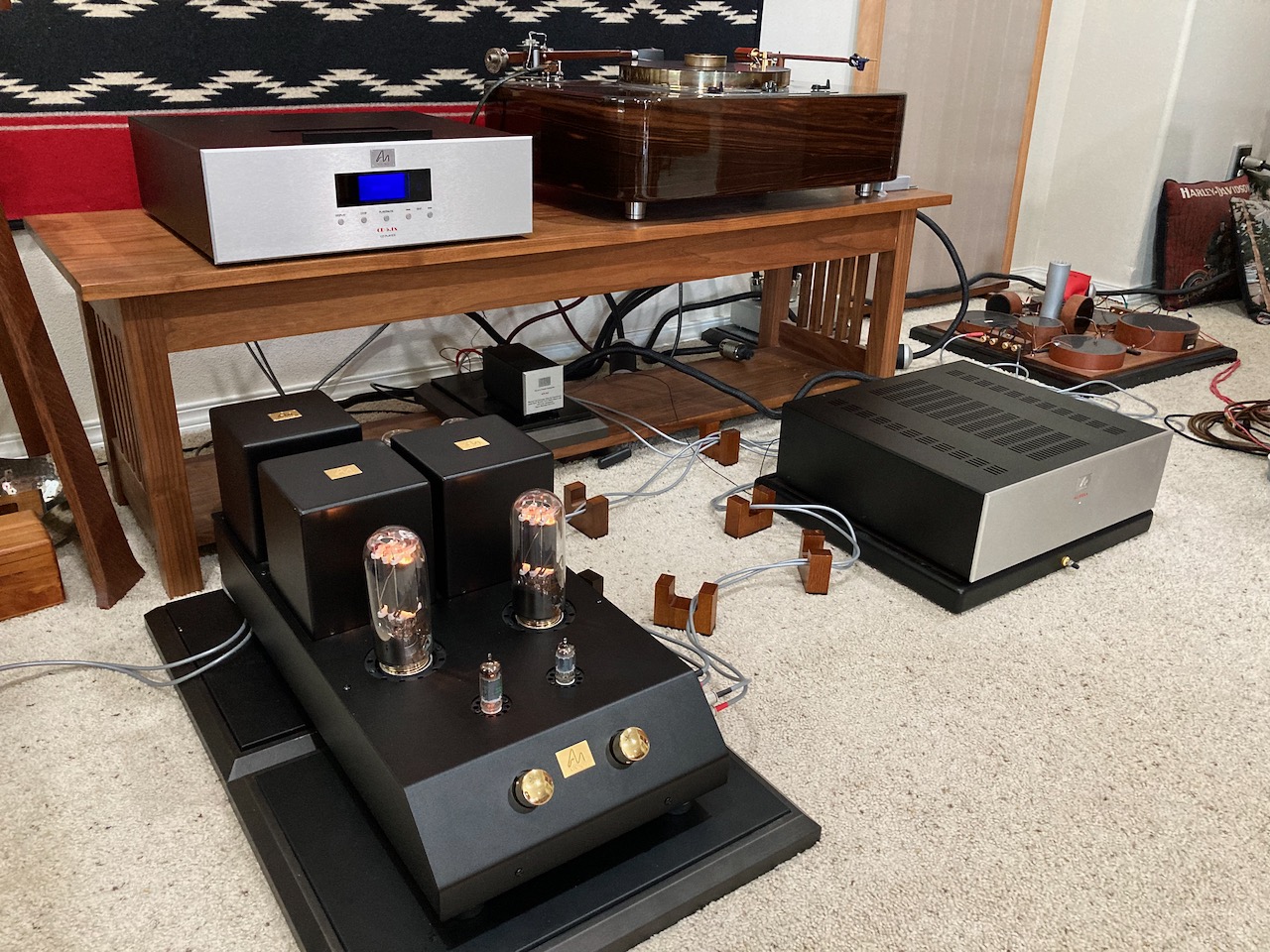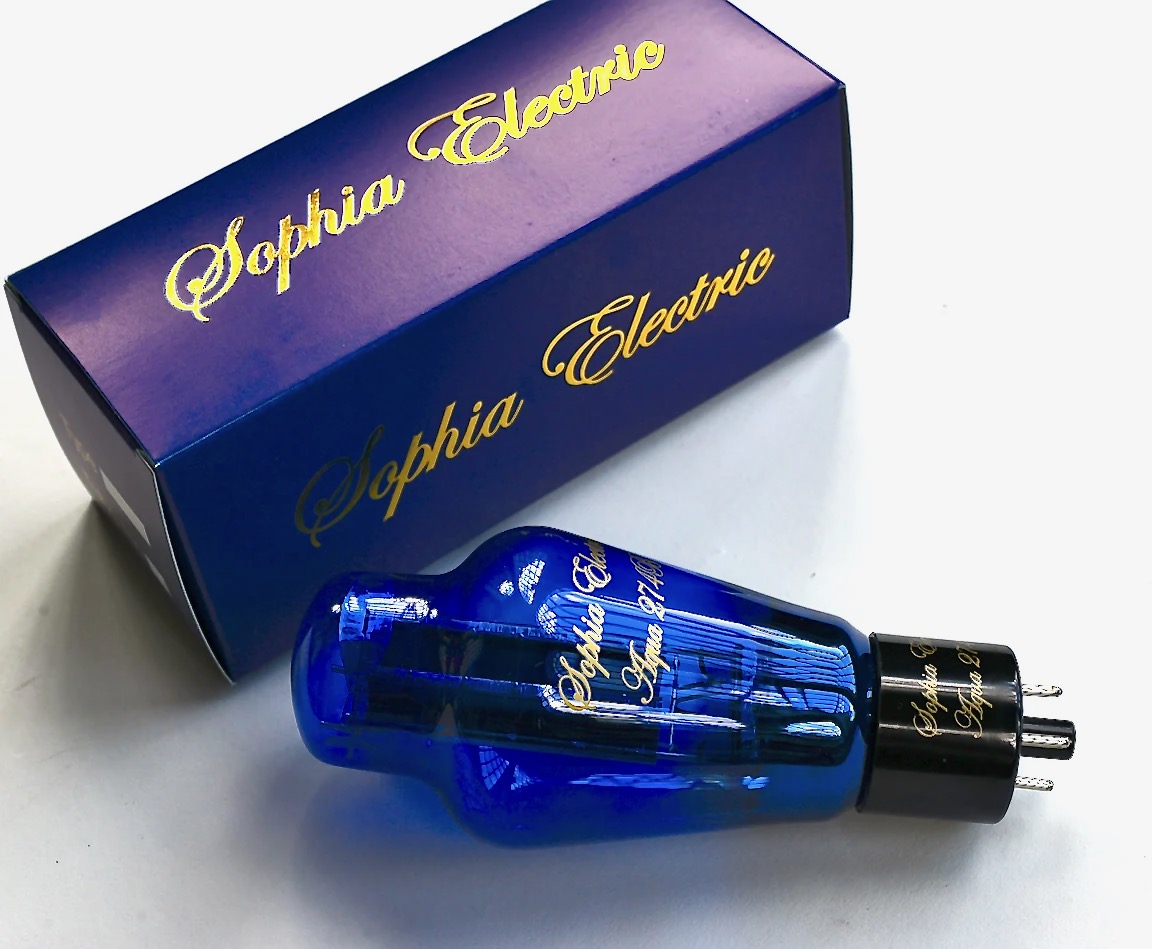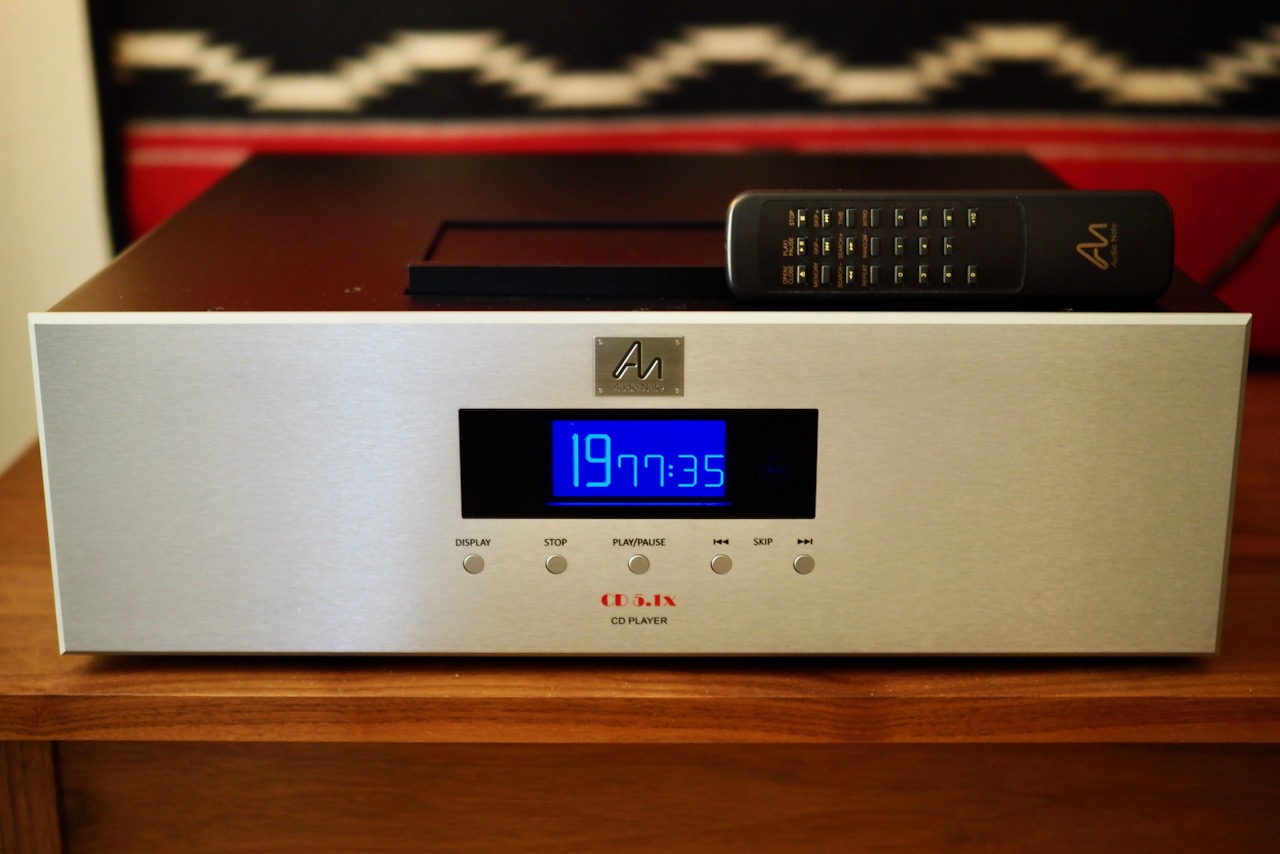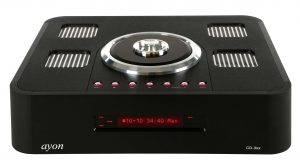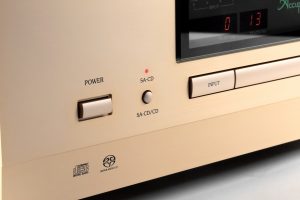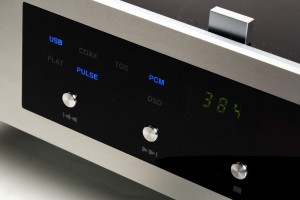Review System
The equipment in my system for this article is—from speakers to source—the Duelund-Altec Project "Stokowski" Altec loudspeakers (HERE), Duelund DCA16GA tinned-copper speaker cables (HERE), the Audio Note (UK) Oto Phono SE Signature EL84 parallel single-ended-pentode integrated amplifier (HERE), with Duelund Dual DCA16GA tinned-copper interconnects, terminated with plastic-free Duelund RCA connectors, connecting it to the Audio Note (UK) CD 2.1x/II.
My Classic Turntable Company hot-rodded Garrard 301 served as the vinyl front end for CD to vinyl comparisons. My CTC 301 utilizes a Thomas Schick tonearm fitted with a Yamamoto blackwood headshell and Soundsmith Zephyr Mk III high-output phonograph cartridge (HERE). The tonearm leads from the Schick tonearm go directly into the Oto's phone stage.
My CTC 301 also utilizes a second tonearm, the Pete Riggle Audio Engineering Woody tonearm, mounted with an Ortofon SPU Classic G MkII moving coil cartridge with an 18 µm spherical stylus profile. The tonearm leads go directly into an Audio Note (UK) AN-S4 step-up transformer (review to come), and the AN-S4 is connected via shielded Duelund DCA16GA tinned-copper interconnects to the Oto's phono stage.
A Few Thoughts About Peter's Audio Philosophy and Listening to Music
You might want consider this section as a preamble to my listening impressions, as Peter has raised some important and illuminating points to reflect on, enough so that I have altered my usual process of evaluating hifi equipment to incorporate Peter's ideas:
Audio Equipment is the Servant of the Music
Peter makes a strong case for audio equipment being the servant of the music, by being invisible to the music to the greatest extent possible, and by providing a "believable and musically authentic representation" of the music on a recording, regardless of a particular recording's sound quality.
Peter also addresses the relative importance of the audiophile-style emphasis on visuospatial recording artifacts like soundstaging, imaging, etc., and dismisses that emphasis as not being an important part of a musical performance.
Peter's raison d'être is that audio equipment that overly emphasizes visuospatial traits can significantly diminish the ability to play music from our entire recorded music canon in an enjoyable fashion, severely limiting what music we can listen to and enjoy.
Peter sees this topic as a key to being able to listen to all kinds of music from any period in the history of our recorded music canon in an enjoyable high-fidelity fashion, and in developing audio equipment that allows that.
Comparison by Reference versus Comparison by Contrast
Peter discussed two audio equipment designing and voicing paradigms—comparison by reference versus comparison by contrast—that deals with how audio performance developed with those paradigms can affect what music you can listen to and enjoy.
According to Peter, the "comparison by reference" method of designing & voicing audio equipment is based upon designing & voicing audio equipment so that its performance is maximized for exceptional recordings from the magnetic recording era and beyond, while essentially ignoring the audio performance that is necessary to allow listening to some of the most important musical performances ever recorded coming from the acoustic and electrical recording eras.
Peter uses an alternate method of designing & voicing audio equipment that he refers to as "comparison by contrast." With the comparison by contrast method of developing & voicing a large number of random recordings are selected from all the recording eras, and the design and voicing process optimizes the equipment's ability to play all kinds of music in high-fidelity, rather than limiting it to just exceptional recordings from the magnetic recording era and beyond.
A Music Lovers versus Audiophile Style of Presentation
Longtime readers will recognize that Peter's philosophy on audio equipment design & voicing plays directly into my personal biases about high-fidelity audio equipment and listening to music, which I have been referring to as a "music lovers versus audiophile-style" presentation of the music for the last decade or so.
However, Peter's depth of knowledge and insight into this topic, about how each design emphasis is achieved, and the implications this holds for listening to a broad spectrum of music, is vastly greater than my own.
Peter's discussions of this topic have been very illuminating for me, and have allowed me to get a much greater understanding and appreciation for how meaningful this distinction is in my day-to-day enjoyment of listening to music.
The first question that you and I might pose might be, "Is this distinction in the approach to designing & voicing audio equipment real and meaningful, and if so, how does it affect my day-to-day music listening?"
My observation upon listening to music with Peter with his audio system, and listening to his entry level Audio Note (UK) equipment in my own home, is that yes, there is a real and crucially important distinction between the "comparison by reference" and "comparison by contrast" design & voicing methods that dramatically effects what music I can listen to and enjoy.
Reflecting back on the audio equipment I have owned that was presumably developed with a comparison by reference method, I found I quickly became frustrated and irritated with it because it so limited what I could listen to in an enjoyable fashion.
However, audio equipment developed with a comparison by contrast method has allowed me to listening to anything I want, and to experience it in an enjoyable and high-fidelity fashion.
That distinction is a major breakthrough for me, and one that I want continue to explore.
For example, when I have visited audio shows in the past, or even when I visited passionate enthusiasts of high-performance audio, they often tended to play only the exceptional recordings from our recorded music canon, as they desired to impress me and the other listeners with the sound quality of their audio system.
However, when I was visiting Peter Qvortrup last year, he played 78 transfers to CD for me from the acoustic and electric recording eras, and they were wonderfully musical listening experiences.
Peter also played a number of LPs for me, mono and stereo, with the common thread that ran through our listening session being how enjoyable and engaging that wide variety of music was through his audio system.
Listening to music with Peter was a fundamentally different experience than listening to music at audio shows, for example, and I really enjoyed it.
Meeting Peter, listening to music with him, hearing him discuss what he believes is most important in audio, and now listening to his Audio Note (UK) equipment in my own home, have become watershed moments for me in terms of understanding how these two genres of audio equipment voicing play out in everyday listening.
Consider this: Our entire recorded musical canon spans the acoustic horn recording era (1877-1925), the electrical recording era (1925-1945), the magnetic recording era (1945-1977), and the contemporary digital recording era (mid-1970s to today).
Humanity's entire recorded music canon is of enormous historic importance to the musical arts, so much so, that in the USA, the Library of Congress' National Audio-Visual Conservation Center has archived our recorded music history so that the generations that come will be able to enjoy our recorded music heritage, and I imagine that other countries have done the same thing, to a greater or lesser extent.
Think about how rich our recorded music canon is from all those eras, and most of what was recorded in a prior era was never re-released in subsequent eras.
Recordings popular among audiophiles probably make up less than one percent of the music recorded since the beginning of the recording arts, so if that's all you listen to, you are missing most of our important recorded musical legacy, and are depriving yourself of some truly great music that will expand your listening horizons.
It can be immensely gratifying to become more familiar with the various eras of our musical history and legacy, as a well-rounded person who appreciates music, and having an audio system that is designed to allow for listening to a broad range of recordings from our history allows for that.
That is where this difference in these two approaches of designing and voicing audio equipment that Peter described earlier—comparison by reference versus comparison by contrast – matters in everyday listening.
In recent articles I have described this ability of audio equipment to play a broad range of recordings in a musically satisfying way as having a "wide listening window," and audio equipment that limits the listener to a comparatively few exceptional recordings as having a "narrow listening window."
For people who enjoy fine audio, but are music lovers at heart and want to listen to a lot of varied music, a narrow listening window results in continually altering their audio systems in hopes of being able to enjoy a broader cross-section of music, and often coming up short. So, they buy some new audio equipment, but that comes up short too, and the cycle repeats itself.
I now believe that situation is largely a manifestation of the comparison by reference approach to designing and voicing audio equipment, and if you want to be happy and content with your audio system for the long term, you are better off with equipment designed and voiced using a comparison by contrast approach.
Now when I write about audio equipment, I am going to incorporate more of an emphasis on a comparison by contrast approach, that is I will incorporate a much broader range of recordings from different eras, of varying recording quality, to evaluate overall performance.
Incidentally, my Duelund-Alec Project "Stokowski" loudspeakers do the wide listening window performance attribute impressively well, as does the Audio Note (UK) Oto Phono SE Signature integrated amplifier, making music from the different recording eras a truly enjoyable and remarkable music feast.
The second question you and I might pose is, "Does voicing equipment with a comparison by contrast approach mean that that style of audio equipment is limited in performance on the best recordings, and in presenting visuospatial performance, that so many audiophiles value?
My observation is that—if anything—the best recordings sound even better, more natural and engaging musically, and provide even more natural and "real" sounding visuospatial information from recordings.
In other words, the comparison by contrast approach to designing and voicing equipment is a win-win situation across the board for both music lovers and audiophiles.




